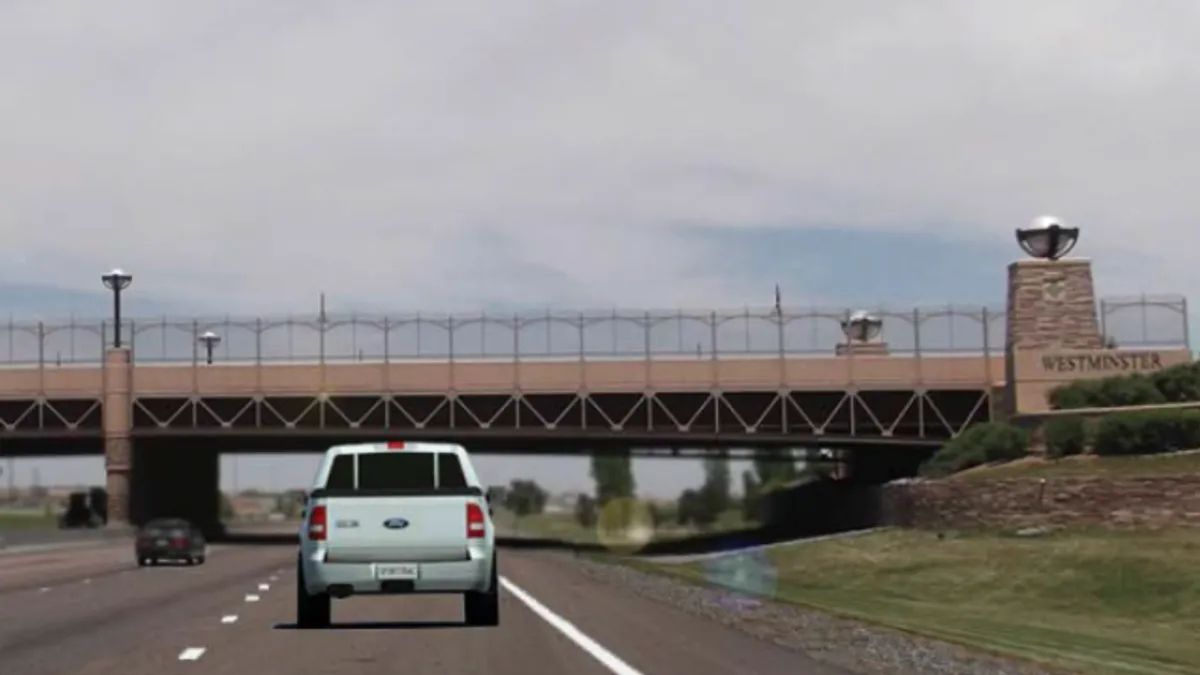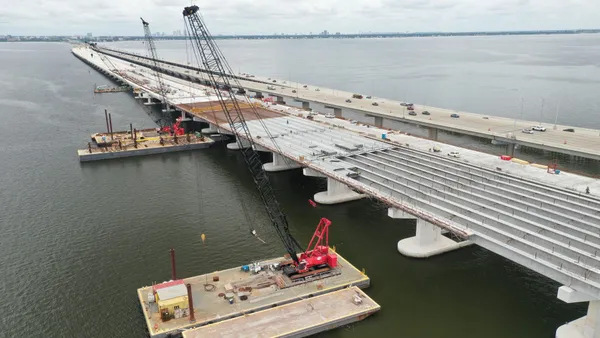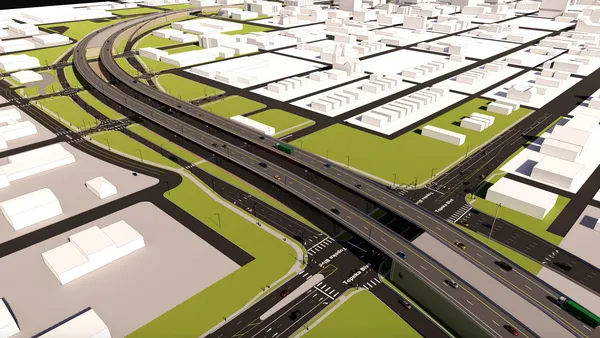Dive Brief
- A recently released private engineering firm's report details what caused the collapse of a retaining wall and overpass on U.S. 36 in Westminster, Colorado, in July 2019.
- The 33-page report from CTL Thompson, a Denver-based company that specializes in geotechnical engineering, was obtained by the Denver Post earlier this month. The report agreed with the initial assessment by the Colorado Department of Transportation, which was that the soil beneath the stretch of highway was compromised by waterlogged, shifting clay below, causing the overpass approach to buckle and crack.
- The report notes that there was "extremely heavy rainfall" during construction in September 2013, and pointed to it as a probable cause of the settling clay, along with the failure of the project's drainpipe system to do its job. The report also noted that there was heavy rain in the late spring and early summer of 2019.
Dive Insight
The findings come two years after the collapse, and provide the basis for a $14 million settlement paid to the Colorado Department of Transportation. An Ames-Granite joint venture paid $6 million, and its engineering consultants, Kleinfelder Inc. and HDR Engineering paid $4 million each. The $14 million almost offsets the $17.6 million in costs associated with the rapid response to and reconstruction of the collapsing area, according to the Denver Post, which obtained the report through a public records request.
The collapse happened on the eastbound part of the highway, and left a 200-foot-long gash in the road, according to the Denver Post. The collapse occurred between the Church Ranch Boulevard and Wadsworth Boulevard exits on the highway, and the gap widened as fast as an inch per hour at the time. While there were no injuries as a result of the damage, the stretch of highway was closed for almost three months while repairs were made.
As a result of the settlement, none of the involved parties claim liability for the collapse.
"CDOT, AGJV, HDR, and Kleinfelder are pleased that the matter has been resolved without the need for litigation and look forward to future opportunities to work together," reads part of a statement on August 6 by the involved parties.
The report, prepared for the Colorado Attorney General's office, said that the project's drain system was not sufficient to remove water behind and below the retaining wall.
"In this instance, the vertical strip drains likely transmitted flood water and subsequent precipitation to the Class I material below the wall. This could also have occurred with sloping strip drains," it read.
The report also stated that the drains weren't sufficient enough to deal with the water that came from high levels of runoff during rainstorms, despite being on par with what was originally sought.
"Our observations confirm the drains were generally installed in conformance with the plans. However, the drain design and installation were not sufficient to control water which seeped into the Class I fill during and following construction; in particular the Class I fill added with over-excavation below the wall," read the report.
This article first appeared in Construction Dive: Infrastructure, a new weekly publication from Construction Dive. Click here to have it sent straight to your inbox.















